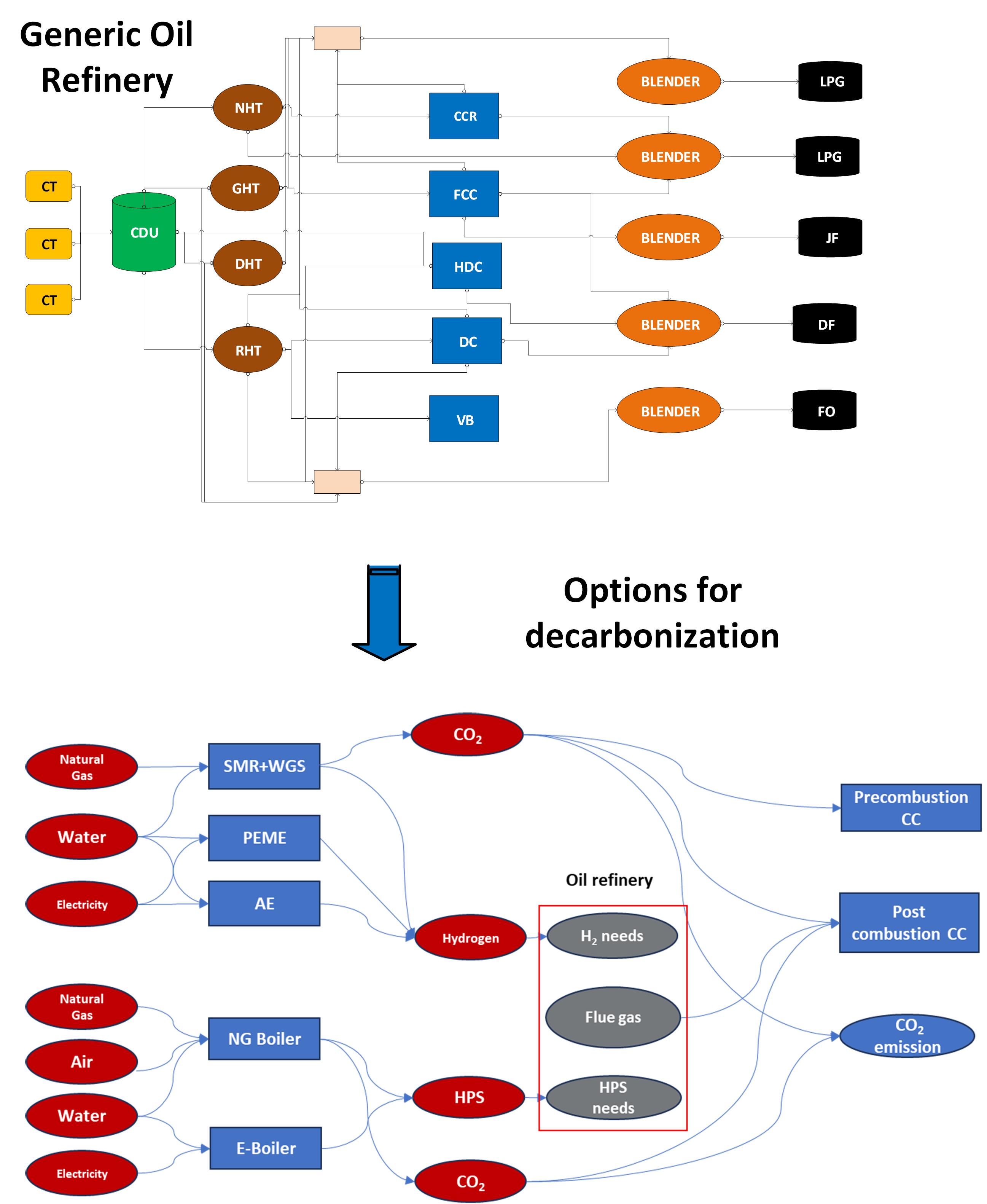
Decarbonization of the Chemical Industry - Oil Refineries
The chemical industry is actively pursuing energy transition and decarbonization through renewables and other decarbonization initiatives. However, navigating this transition is challenging due to uncertainties in capital investments, electricity costs, and carbon taxes. Adapting to decarbonization standards while preserving existing valuable infrastructure presents a dilemma. Early transitions may lead to inefficiencies, while delays increase the carbon footprint.
This research proposes a framework to find an optimal retrofit decarbonization strategy for existing oil refineries. We start with a generic process flowsheet representing the refinery's current configuration and operations, and consider various decarbonization alternatives. Through superstructure optimization, we identify the most cost-effective retrofit plan. We develop a Mixed-Integer Linear Programming (MILP) model, integrating simplified process equations and other logical constraints to identify the most economical retrofit decarbonization strategy.
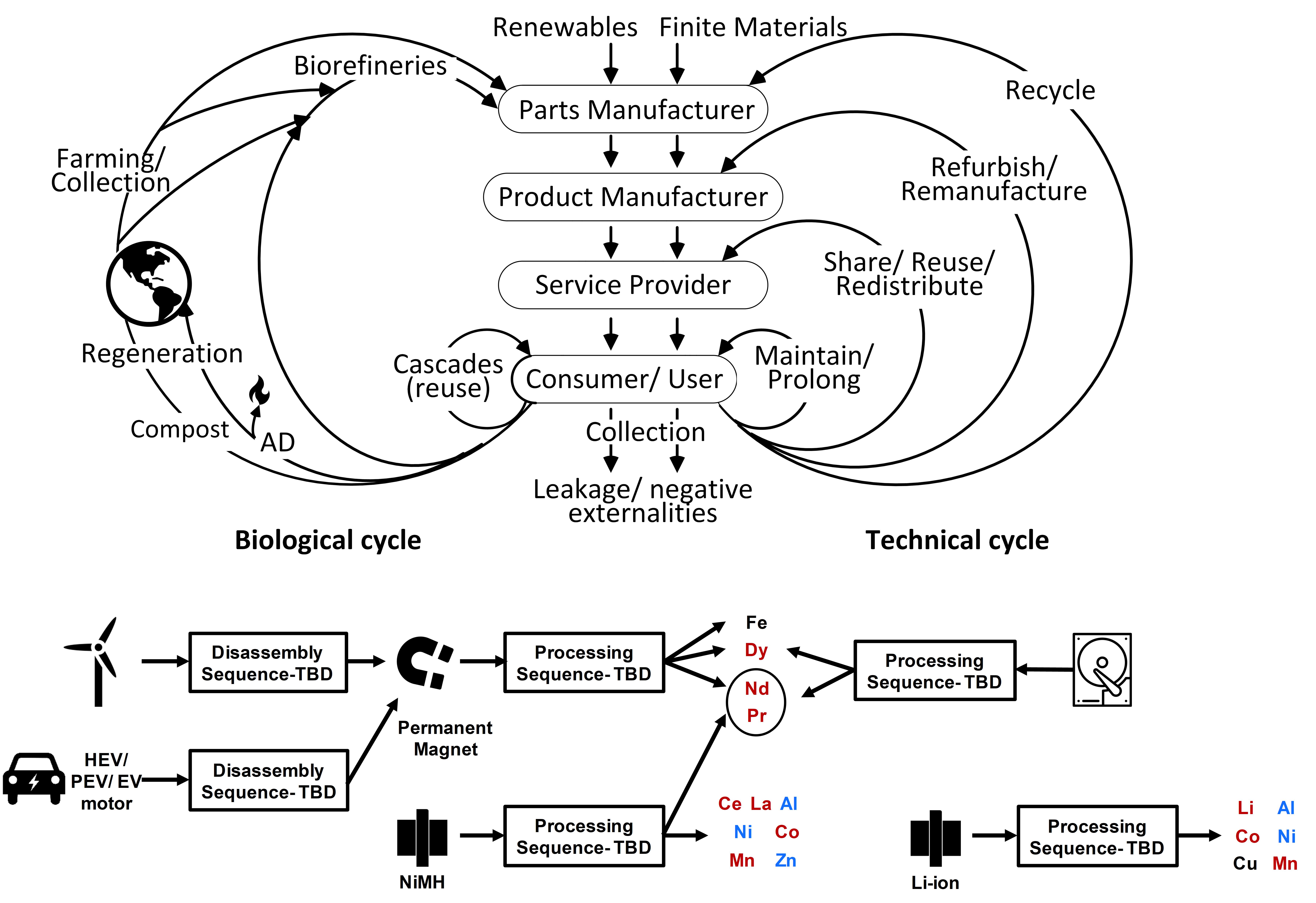
Recovery of materials from end-of-life- products- Circular Economy
The current extract-make-use-dispose paradigm throughout product supply chains has enormous environmental and socioeconomic impacts, including climate change, biodiversity loss, depletion of natural resources, and pollution. Policymakers and industry practitioners have suggested Circular Economy (CE) to solve these challenges. CE aims to re-design current processing/ consumption practices to eliminate waste and pollution, circulate products and materials at their highest value, and regenerate nature. Although conceptually simple, the development of CE networks is hindered by the lack of scientific guidance on how to implement and evaluate the effectiveness of CE initiatives.
The goal of this research is to advance the state of the art in designing and evaluating CE networks. Specifically, we intend to develop mathematical models for different CE initiatives, and multi-agent networks. The recovery/ reuse of plastic waste and rare earth minerals from end-of-life products are being considered as case studies.
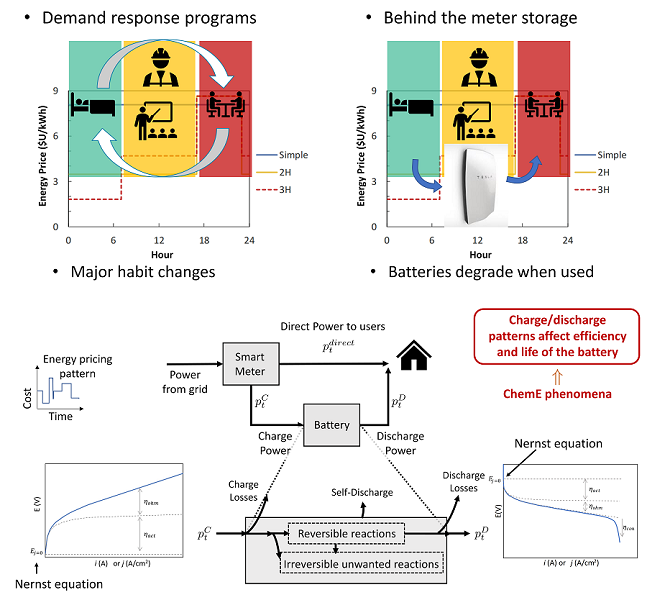
Storage of energy from renewable non-programmable sources:
Decarbonization of the energy mix has led to a large displacement of fossil fuels from the electricity generation sector; modern renewable energy sources, such as wind and sunlight, are now fully integrated into the power grids. However, as these can not be programmed to be available when needed, there exists a mismatch between generation and demand. In addition, the closer the power mix is to 100% renewable, the larger the mismatch is. Our group has looked at energy self storage in batteries as a way to take advantage of time of use (TOU) strategies.
TOU strategies seek to match supply and demand with differential electricity prices that penalize on peak consumption. Charging batteries at off peak hours is a solution that displaces demand from the grid, and prevents a large disruption in the user’s daily routines. In complex TOU tariffs, how to optimally operate the battery is not trivial: as batteries degrade when being used, charge/discharge cycles need to guarantee that savings in the electricity bill will be larger than the cost associated with its degradation.
Group expertise/contributions
- Framework for evaluation of batteries in TOU tariff setting: the tool solves a convex optimization problem that takes into account current induced battery degradation and balances electricity bill savings with the cost of replacing the battery. Our convex formulation is able to solve problems that consider long time behavior of the battery (longer that year long time spans)
- Framework for evaluation of batteries in TOU tariff setting II: this second tool takes as an input the user's consumption profile and adds capabilities for peak shaving.
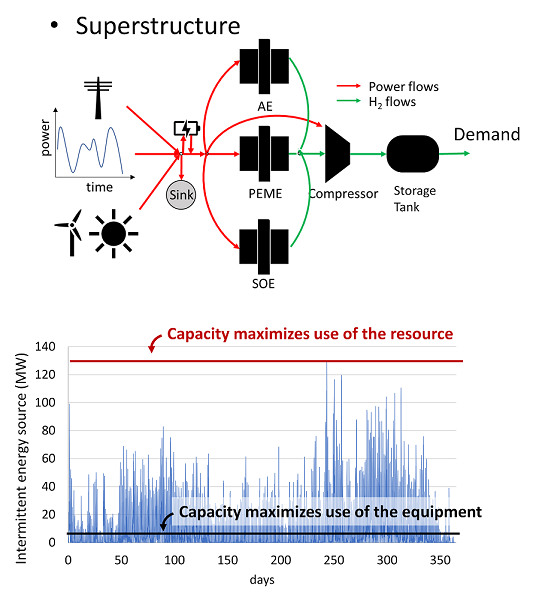
Production of green-Hydrogen:
Green-hydrogen refers to hydrogen produced by electrolysis of water with electricity produced by a renewable energy source. Green hydrogen is seen as the zero-carbon substitute of diesel in long distance heavy duty applications (trucks) and a zero-carbon substitute for the fossil based hydrogen currently used in the chemical industry. Modern renewable energy sources like wind or solar are of an intermittent nature, a fact that poses a challenge to the operation of the electrolyzers hence the design of power to hydrogen systems.
Group expertise/contributions
- Framework for defining optimal capacity that needs to be installed for producing hydrogen from surpluses of renewable energy.
- Superstructure-based optimization framework to design green-hydrogen production processes. The superstructure includes selection of the power sources (wind/sun generators, grid), selection of the type and size of electrolyzer, and selection of energy storage device (battery, vessels).

Transition to a biomass based economy
A biomass based economy seeks to use biomass based sources as the feedstock for the production of fuels and chemicals. In 2004 the US-DOE proposed a value chain network for a biomass-based chemical industry. Since then many lab scale methods to produce these chemicals were proposed. Process design, simulation, techno-economic analysis (TEA) and optimization are required to assess the performance of the different process/chemical combinations at large scale. Network optimization problems can be used to find the best combinations of products and processing routes for different biomass based feedstocks. Such a network should be designed and optimized akin to the petrochemical industry; this is distributed among different and independent actors. The new bioeconomy setting opens up opportunities for countries/regions that do not currently participate in the chemicals value chain. How to ''fit'' in the developing biobased supply chain, i.e. which biomass based products are more attractive for a certain region/country is a problem that can not only be tackled only by the techno-economic perspective; business perspectives need to be considered at the process/ network design level.
Group expertise/contributions
- Process design, simulation, techno-economic analysis: glucose to fructose to 5-HMF, BtL technologies (lignocellulosic biomass to hydrocarbons via syngas Fischer Tropsch), Sustainable aviation fuels, production of lactic acid and PLA from forestry and milk/cheese industry residues
- Conversion of oil refinery into bio-refinery: analysis for Uruguayan state owned refinery (ANCAP)
- Web based tool for solving biomass to chemicals product portfolio and process pathway selection problems
- Algorithm to screen feedstock-processes-products scenarios that takes into account the business perspective
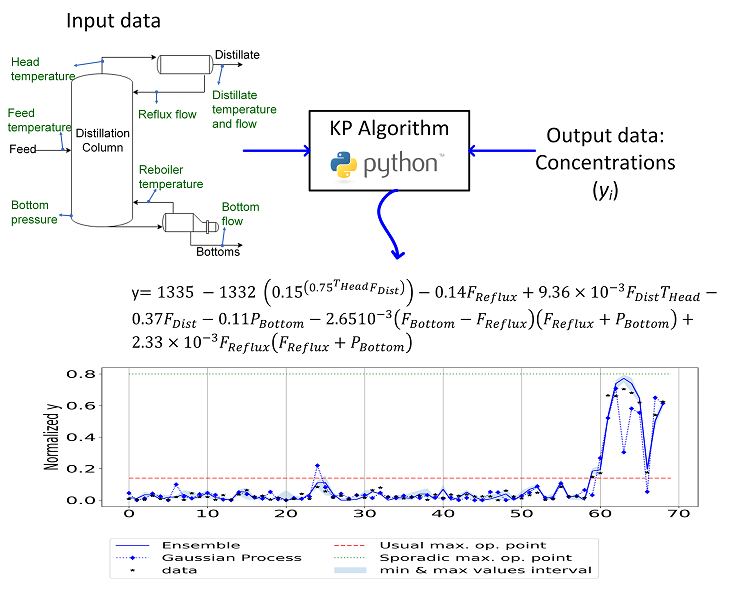
Data Driven Modeling:
This line of research is motivated by the need of substituting computationally expensive rigorous models by simpler functions. Activities here are pursued in collaboration with Faculty members of the Computer Science Institute at UdelaR Uruguay. We are currently looking at Kaizen Programming (KP) as a tool to learn physically meaningful models from data without a priori selection of the functional bases.
Group expertise/contributions
- Development of a machine learning framework based for building soft-sensors using real historical data from an oil refinery distillation column.
- Development of a framework for learning multi-output models from data